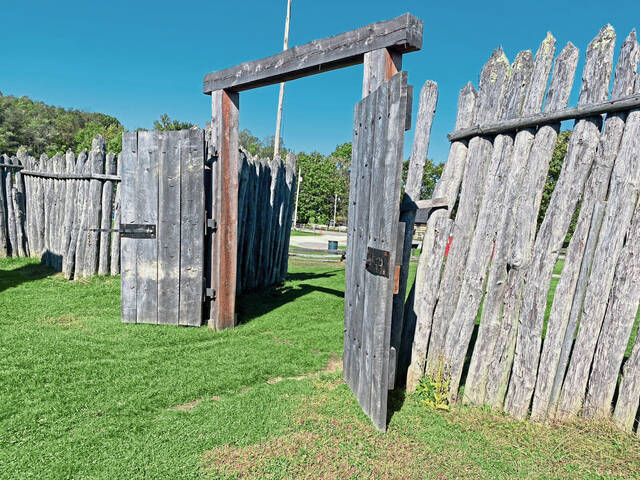https://triblive.com/local/westmoreland/fort-wall-rebuild-at-historic-hannas-town-aims-to-stay-true-to-period/
Fort wall rebuild at Historic Hanna's Town aims to stay true to period

The fort walls at Historic Hanna’s Town serve as a visual reminder of how the frontier community stayed safe during attacks in the 1700s.
That important part of the visitor experience is slated for an update in the coming months, said Mark Katarski, director of Westmoreland County Parks and Recreation. The new wall will be a replica of the current 27- or 28-year-old structure, but with fresh logs and 21st century methods.
“We’re trying to keep it as close to that as we can but looking at ways we can modernize,” he said.
Bids on replacing the fort walls will be opened Tuesday. The current log structure, erected in 1998, has taken a beating from the elements over nearly three decades.
The bid specifications indicate interested contractors must supply 441 linear feet of debarked larch logs standing 16 feet tall to serve as the wall. Logs are put into the ground vertically in a row, also known as a palisade, resulting in a wall 8 to 11 feet tall. The fort is generally a square, except for three bastions that allowed those inside to defend it.
Larch is a deciduous conifer that grows in cold climates of the Northern Hemisphere, such as Siberia, Canada and the Pacific Northwest.
The existing wooden gate will not be affected by the work.
Hanna’s Town was established in 1773 as the first seat of government in Westmoreland County. It became the site of the first courts west of the Allegheny Mountains and an oasis for travelers and settlers.
The fort became a means of safety for the settlers at Hanna’s Town, said Joanna Moyar, director of collections and interpretation at the Westmoreland Historical Society. It may have been originally erected during Dunmore’s War, a brief conflict in 1774 between Virginia colonists and Native Americans.
During any type of danger, settlers dashed behind the log-lined walls where supplies could be stored, Moyar said.
“It was a pretty key element,” she said.
Hanna’s Town was attacked and burned in 1782, but the fort still stood, protecting those inside from Seneca and their British allies.
It’s not clear what ultimately happened to the original structure, but archaeological investigation of the 180-acre site, now a county park, uncovered remnants of the fort walls. It was first reconstructed in 1976 and later 1998, now measuring 69 feet wide and about 123 feet long, according to information compiled by the society.
Proctor’s Militia reenactors typically use the fort and a small building inside it during historical events at Historic Hanna’s Town.
Sitting in a field full of underground springs, the current log walls have rotted, Moyar said.
With the replacement possibly at the end of this year or the beginning of 2026, Katarski said, officials hope the new wall can last another 20 years or more. There is some uniqueness to the project, he said, and officials from the county and historical society will work together to make sure the work has minimal disruption for visitors.
“It’s such an underappreciated, underutilized resource in our county,” he said. “Those of us that are residents, I don’t think have a full perspective of how impactful that is from a tourism end, but also a historical end.”
Copyright ©2025— Trib Total Media, LLC (TribLIVE.com)
